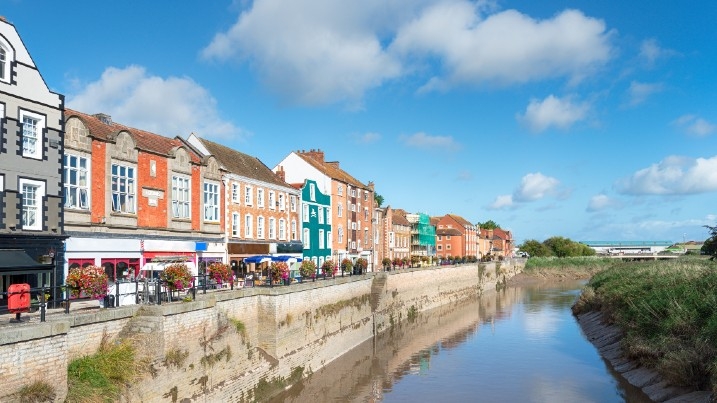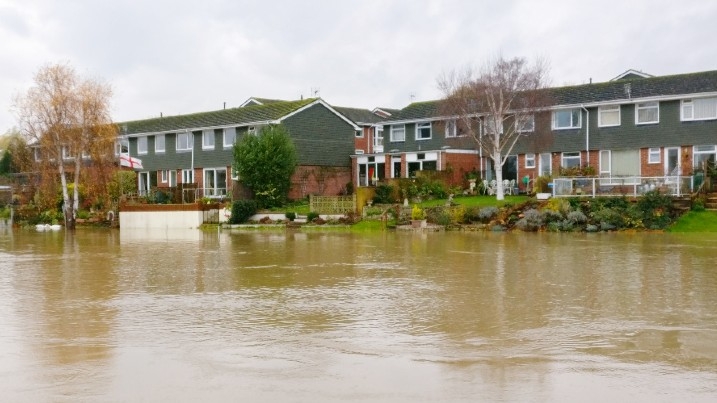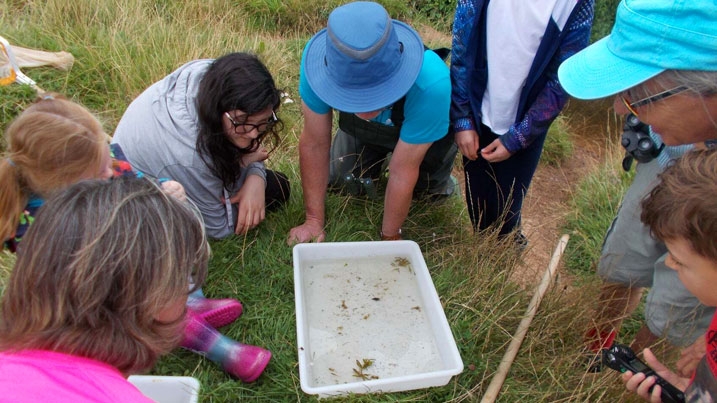Bridgwater Blue Heritage
We’re working with local people to boost Bridgwater’s blue infrastructure, and enhance climate resilience, biodiversity and wellbeing.
What a difference six months can make!
These before and after photos show land now restored to floodplain grazing marsh on the outskirts of Bridgwater in Somerset.
Why Bridgwater?
Bridgwater has a rich maritime heritage, sitting as it does on the banks of the river Parrett. It also benefits from some fine open spaces greatly enjoyed by local people and visitors alike. But despite Bridgwater’s past as a maritime leader the future is less certain. Climate change sees a real and increased threat of flooding to the town from tidal surges and increased rainfall. Nature is in decline and people’s wellbeing is suffering too. Yet, there are great opportunities to face up to all these challenges and build a stronger, more resilient Bridgwater.
This project aims to regenerate blue (water) infrastructure at both large and small scale across the town. We’re doing this by creating sustainable urban drainage systems (SuDS) and addressing flooding issues with nature-based solutions.
We are aiming to tackle the climate and nature emergencies while improving people’s lives and increasing biodiversity. This exciting partnership is also celebrating Bridgwater’s maritime heritage and enhancing wellbeing, as well as prioritising the promotion of sustainable transport through cycling and walking.

We are helping Bridgwater become resilient, healthy and connected. This project will provide a model of natural, urban sustainability, with healthier people and lots of wetland wildlife - not just in open spaces but in the places where people live and work.
To do this, we are working with the Environment Agency and Somerset Council to restore and create wetlands and create blue/green corridors in the town. This is helping nature and people deal with climate change. It is also reducing flooding through more natural, sustainable drainage. We are also building a whole new community of local Citizen Scientists and volunteers who have the knowledge and skills to look after their own environment.
The challenges
Coastal flooding
Communities across the Somerset Levels are at high risk from coastal flooding as most of the land is only 3 to 4 metres above sea level. Sedgemoor (an area of Somerset that includes the towns of Bridgwater and Burnham on Sea) has been named the third most vulnerable area to coastal flooding in the UK in a recent Government report.
In addition, storm and tidal surges pose a catastrophic risk to the low-lying town of Bridgwater.
The Bridgwater Tidal Barrier
The Environment Agency is investing £100m in a tidal barrier to protect Bridgwater and communities upstream from tidal/storm surge events. This is an opportunity to create and develop Bridgwater as a ‘wetland city’. Through this project we can showcase how wetlands can build climate resilient communities, help nature burst back to life and support people’s health and wellbeing.
Freshwater flooding
Heavy rainfall events also pose a significant threat in the area, due to the flat, low-lying surrounding land. This is exacerbated in Bridgwater due to surface water flooding from hard urban surfaces.
Climate change
The risks of both river flooding due to heavy rainfall and coastal flooding during tidal/storm surges are increasing due to climate change and rising sea levels.
So Somerset Council decided something had to be done. Along with other councils in Somerset, they declared a climate emergency and set about putting plans in place to protect their communities.

Floodplains provide an ideal floodwater storage area. But 90% of freshwater wetlands have been lost or destroyed in England in the past 400 years, meaning there are far fewer areas for floodwater to be stored. The Meads in Bridgwater is an example of floodplain grazing marsh that was drained in the past to meet agricultural needs. Today, the imperative is to use these places to once again store floodwaters for longer.
Wellbeing
Many of us experience poor mental health, and one of the widely accepted ways we can improve our wellbeing is through a stronger connection to nature. The evidence we gain from programmes like The Blue Prescribing Project indicates that having access to blue and green spaces is associated with better health outcomes. However, access to green and blue spaces is poor for many urban communities in the UK and this is true of Bridgwater.
By restoring the Meads we hope to improve the wellbeing of local people by creating more opportunities for nature-based healthy activity, like walking.
Biodiversity
Although the current open spaces in Bridgwater are enjoyable for recreation, they have so much more potential as habitat filled with wildlife, not just around the outside but urban pockets of wildness in the town. And by restoring and creating wetlands both big and small, the local community will have many more spaces to spot their first kingfisher, hear geese, see frogspawn or find the first cuckoo flower of spring.

What we are doing
We are working with local people and community groups to reveal all the available opportunities for creating new and better blue infrastructure. Urban ponds and wet woodlands as well as sustainable drainage systems are all helping reduce flooding from rainfall, boost wildlife in the town and get people involved! Citizen Scientists are being trained to monitor our success and volunteers are looking after the new blue climate change-busting blue infrastructure.
Restoring the Meads
The project is aiming to regenerate blue infrastructure at both large and small scale across the town. With Somerset Council and the Friends of the Meads we’ve already restored the Meads. This is a 20-hectare floodplain grazing marsh on the town’s south-west side historically grazed for agriculture. Unfortunately, the site was drained very effectively in the past. Where it was once able to only store floods for a short while, thanks to our careful restoration, it is now doing so much more to protect people and property in Bridgwater. We’ve repaired foot drains, created scrapes and reedbeds for birds and we are reviving the old course of the Durleigh Brook. This is attracting new wetland wildlife to the area like wading birds, water voles, otters, birds and wetland plants. The Meads is now also proving itself to be a great place where people can find out about wetlands.
More blue spaces for people and wildlife
We are also designing and creating small urban wetlands and SuDS (Sustainable Drainage Systems). We are working with the community in the places where they live, work and go to school. This is helping improve rainwater runoff quality and slow down water flow in heavy rainfall. It’s also improving local wellbeing by providing attractive blue spaces. These interventions are also helping to reduce the urban heat island effect and increase local biodiversity.
Key achievements and outcomes
1. First phase of the restoration of floodplain grazing marsh at the Meads
- New paths are improving access and connectivity for everyone including cyclists, wheelchair uses and pushchairs
- New wetland features have been introduced such as scrapes. An historic river channel has been restored and a new reedbed has been planted
- New water control structures are improving water levels, especially during summer months. This is also helping invertebrates, so providing food for waders, as well as offering new habitat for water voles
- A new conservation grazing regime is helping manage landscape and create microhabitats
- A new foraging area has been planted for wildlife and future generations
- Looking ahead, work is ongoing to charge (provide a constant source of water from river or stream to make the wetland resilient to drought) the wetland area, introduce more water control structures, and deliver continuing citizen science
2. Brewery Field SuDS
We have helped to design and provide advice for a surface water SuDS system which serves a new commercial development. This will:
- Be a wildlife haven
- Naturally clean water from the runoff from the carpark
- Provide amenity space for people
- Reduce pressure on the downstream system
3. SuDS for schools
Four schools at risk from flooding will have new SuDS installed with associated learning programmes. This will provide:
- Learning resources
- A biodiversity boost for dragonflies, wetland plants and more
- A sensory environment for children to connect with nature
- Climate change resilience
Get involved
Stay in touch - head to the Bridgwater Blue Heritage Facebook page to connect with the online community and join in with local events.
Volunteer - contact Bridgwater Blue Heritage Project Manager, Joe May, for volunteering opportunities around the project.